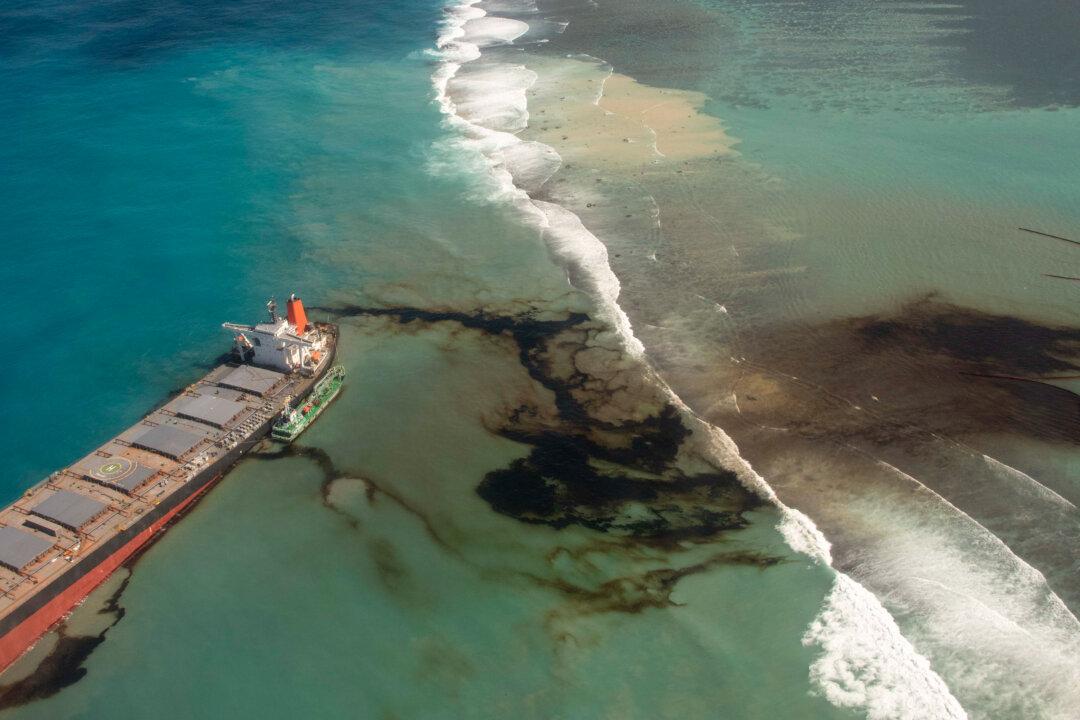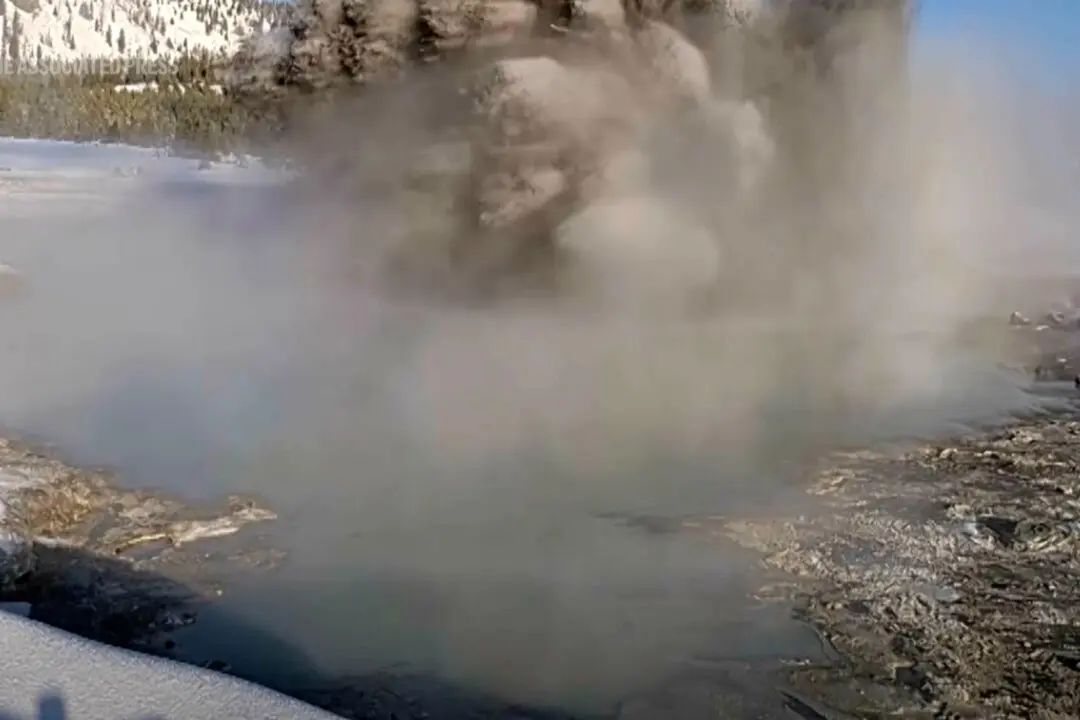JOHANNESBURG—Thousands of students, environmental activists, and residents of Mauritius were working around the clock on Aug. 9, trying to reduce the damage to the Indian Ocean island from an oil spill, after a tanker ran aground on a coral reef.
An estimated 1 ton of oil from the Japanese ship’s cargo of 4 tons has already escaped into the sea, officials said. Workers were seeking to stop more oil from leaking, but with high winds and rough season Aug. 9, there were reports of new cracks to the ship’s hull.





